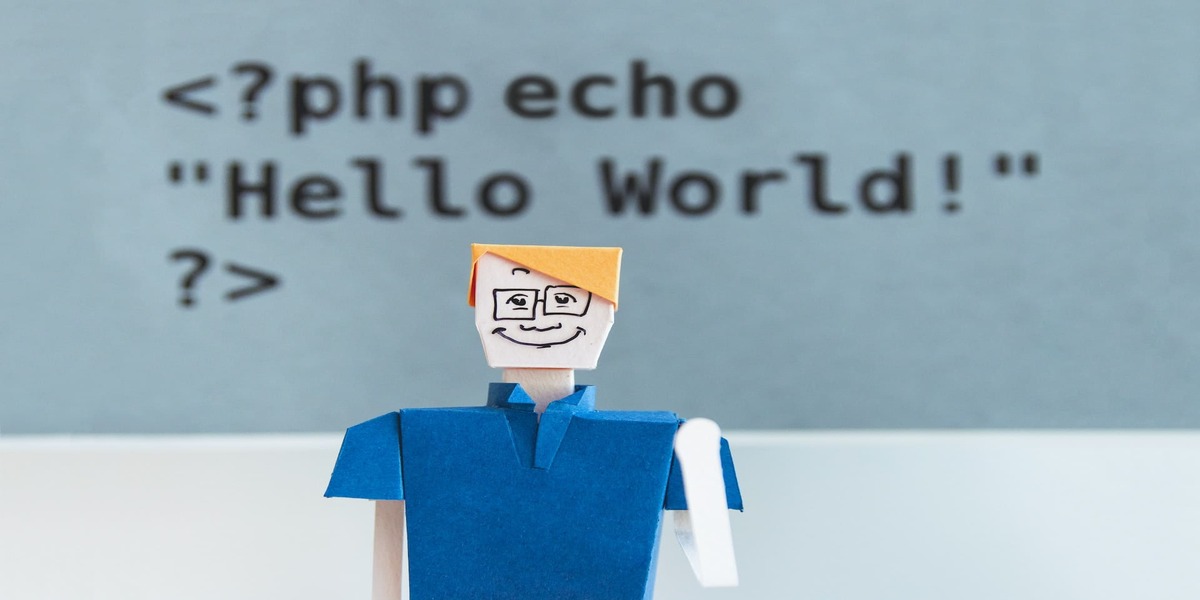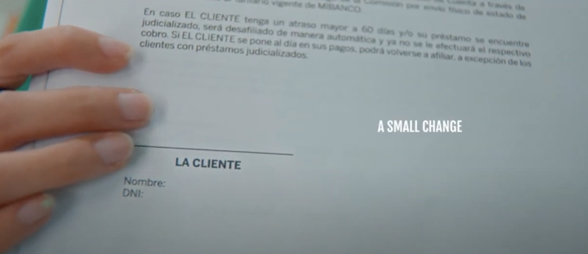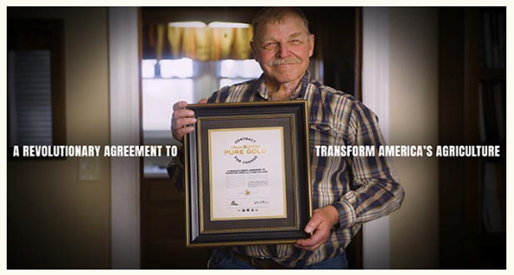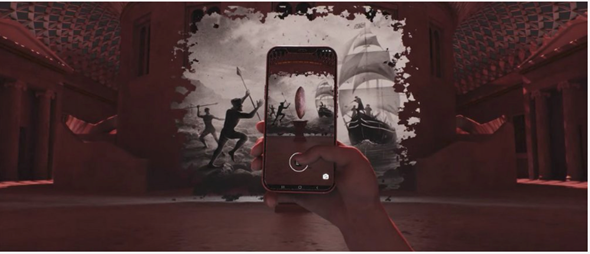Creativity Rolls Up Its Sleeves

In times of crisis and change, creativity isn’t optional—it’s essential. Discover how brands like Nike, Dole, and Mibanco used bold, creative actions to drive purpose, profit, and progress. See why creativity is the new engine of business transformation.
Why is a seemingly abstract concept like 'creativity' important when the world is dealing with the pains of a pandemic, the growing cost of living, the impending doom of recession, seismic shifts in how we live and work, and climate change?
These events profoundly impact society and people's expectations of brands and businesses. More than ever, organizations need creativity to solve, skill, and scale - the ability to produce new, original ideas and use unusual methods or solutions.
Marketing and advertising creativity have been proven to correlate positively with above-average financial performance. (McKinsey's Creativity Score - Cannes Lions Effectiveness). Creativity can enable organizations to have 'breakthrough innovation,' drive brand love, manage headwinds, achieve audacious goals and build future demand more effectively than their competitors.
While it appears complicated to decode, measure, or replicate, let's examine some emerging themes and examples of creativity applied to business that can inspire you and your team.
Actions not Ads
Advertising has been at the heart of marketing creativity and storytelling. Who hasn't been motivated by a powerful image or brilliantly written copy, touched by an emotional film or a funny meme?
But today, creativity is rolling up its sleeves and going beyond ads. Creativity in action across the business – supply chain, product, e-commerce, data analytics, environmental and social impact.
Inclusion Marketing and Sustainability
Inclusion marketing and sustainability are the new normal.
75% of people expect businesses to play their part in solving human challenges like equality and social justice. 82% believe actions on inequality mean nothing unless integrated throughout the business (Wunderman Thompson 2022 global inclusion research).
Brands and businesses are taking creative actions in product development and every aspect of the business by tapping into the issues their audience truly cares about. These creative ideas, in turn, are translating into commercial success and brand love.
Creativity in Business
Mibianco
A great example of integrating diversity, equity, and inclusion into business practice (not merely tokenism) is Peruvian bank Mibianco.
In patriarchal Peruvian society, married women could not get loans without their husband's consent and signature. The financial system 'excluded' women from the freedom to make choices, start a business, or study.
Mibanco's simple act of creativity was to consider all women as single in the application form, hence eligible for loans. This small action enabled 212 million additional loans, a 180% increase in women seeking loans, $45 million worth of media impressions, and a lot of brand loyalty.

Nike
Nike's brave and inclusive action of signing footballer Colin Kaepernick and supporting his brutality protest against African-Americans was controversial.
Initially, it resulted in the burning of Nike shoes, outrage on social media, and rebuke by politicians but was soon followed by a 31% sales increase, $297 million increase in y-o-y revenue growth, $6 billion increase in brand value, %163 million in earned media.
This Crazy Dreams campaign became the most successful marketing initiative in the brand's history.
This proved that Inclusive actions are much more powerful than ads.
When 73% of people across 35 countries agree to factor sustainability into their purchases (Kantar's Global Sustainability Report), you know sustainability is the new normal.
Organizations that go beyond lip service and inject creativity into their sustainability practices and DNA are building preferences for today and tomorrow.
Michelob Ultra Organic Beer
A great example is Michelob Ultra Organic Beer. While 90% of Americans want to buy organic, only 1% of farmland is under organic farming.
The brand applied creativity to its supply chain by entering into a revolutionary agreement with farmers to help them transition to growing organic barley. And supported investment, training, and buyback for their produce.
This translated into an 18% + market share growth, and 100,004 acres are transitioning to organic barley cultivation.
All three have benefitted by truly listening to what its audience cares about – the brand, biodiversity, and other barley buyers. It was not an ad that 'talked the talk' but the action that was advertised.

Dole
Another great inspiration is Dole, the Philippines' largest pineapple grower, who collaborated with Ananas Anam to upcycle tons of rotting pineapple leaves for each ton of fruit they grow. Their creative action has made Pinatex the world's first vegan, cruelty-free, sustainable, and non-polluting leather from upcycled pineapple leaf fiber.
This has built a new revenue stream, and 200 brands in 80 countries now use Pinatex. Additionally, the many upsides of applying creativity to the byproduct of Dole's business are that 2.5 mn tons of rotting leaves no longer discharge methane, and a completely circular process ensures discarded products return as biomass. Creativity is shifting from 'storytelling' to story doing.
Audiences are cynical about stories that are not grounded in tangible actions. It's time for triple bottom lines - Planet, People, and Profit. They all require equal weightage and creative solutions.
So, ask yourself whether your organization can serve a specific section of society or the environment through the products you make or services you offer. Are you solving a social, human, or environmental challenge your audience cares about?
Experiences 3.0
From one-way messaging to two-way social engagement, Web 3.0 will provide infinite ways to apply creativity to immersive, interactive digital experiences for audiences.
Vice Media
Vice Media created a never-before immersion for visitors to experience the unfiltered history of how priceless artifacts had been taken from their home countries to the British Museum.
Visitors could travel back in time through Augmented reality filters on their phones and local narratives that brought real stories of their origin to life. 100,000 + unfiltered tours, 18 million impressions, and 35,000 podcast downloads were the outcome of this experience.

Girls Who Code
To inspire more girls to become coders, Girls Who Code took the creative approach of not treating their audience as consumers and limiting their conversations to the seemingly boring subject of coding.
They aligned themselves to things young women are passionate about, like music, fashion, content, and celebrities. In partnership with music icon Doja Cat, young women were invited to create an interactive, immersive music video in which they could direct and modify the ending through a few lines of code.
By secretly enabling them to experience coding and its exciting outcome - 3 million interactive coded experiences were achieved.
Ban the word consumers/ customers and view your audience as people with varied interests and passions whose experiences are enabled by technology. The $104 bn creator economy does this well (Forbes). They treat them
The audience is a community of shared likes, concerns, and passions. Share knowledge and new experiences with them. Huda Khattan is one such influencer who has built a $1.2 bn brand of makeup and 50.7 million followers through this.
Creative Business Transformation
Organizations and brands are no longer limiting the definition of their business but using creativity to audaciously reframe 'the business that they are in.'
Suncorp
Suncorp, an Australian insurance company, was plagued by annual payouts for thousands of Australian homes damaged by extreme weather – cyclones, bush fires, and floods. 97% was spent on repairs and a continued cycle of destruction and rebuilding.
With a simple, creative shift of reframing the way they think about their business from home insurance to home safety, they built a home with several renowned resiliency experts that could withstand extreme weather conditions and initiated industry-defining product innovation. The government has subsequently developed a resilience construction code and set up a $600m resilience fund.

We Capital, Mexico
We Capital Mexico used an unusual solution to provide micro-loans to low-income women who didn't have a credit history. It launched a data collection information center beyond the reach of banks to build the credit history of millions of women who take and repay loans from their neighborhood stores. All tracked simply through bots on Whatsapp.
23% of women have received microloans from banks, and 50,000 shopkeepers enable that through their data records.
The wealth of information that data provides is a fertile ground for creativity. There are endless possibilities to apply it to Machine Learning, Bots, and even close-loop retail platforms like Amazon.
So, reframe your business and see it not through the narrow lens of your product or service category but through your audience's eyes and what you can enable in their lives.
Parting Thoughts
This is not intended to be an exhaustive list but suggestive of ways in which you can apply creativity to your business challenges for impactful results. So, care about what your audience cares about, solve not just for business but also for humanity and the environment. Let's make the Metaverse a 'Betterverse' and use data creatively.
Creativity should not be limited to a few. It needs to be embedded into the culture and across the organization - how you define your business, understand your audience, and whom you partner with. Creativity is not esoteric or subjective but has clear, measurable metrics and success outcomes.
Are you ready to roll up your sleeves and apply it across your organization?
This article was contributed by our expert Atika Malik
Frequently Asked Questions Answered by Atika Malik
Q1. How do you make marketing creative?
Marketing can be made creative by making it more customer centric where you understand your target audience. Also focus on the end-to-end experience.
Q2. How can creative marketing increase your sales?
It can help get the required attention from the customers and encourage them to purchase your product and also remain for customer for long.
Comments
No comments yet. Be the first to comment!
